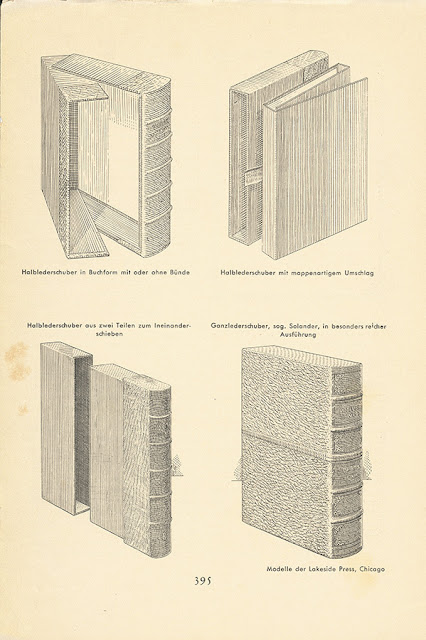In 1983 the Guild of Book Workers organized a small set book exhibition of sixteen fine bindings on Cutcliffe's The Art of Trout Fishing on the Rapid Streams published as a fine press book with illustrations by D. R. Wakefield. That fine press edition is no longer available, but the original is (scroll down).
H. C. Cutcliffe. The Art of Trout Fishing on the Rapid Streams. Revised and illustrated by D. R. Wakefield. Tiverton, Devon: The Chevington Press, 1982. Printed in Perpetua type on handmade Barcham Green. 10½ x 7 7/8 x 3/8 inches. Limited to fifty copies, signed and numbered by the illustrator.
Binders who participated were:
- William Anthony
- David P. Bourbeau
- Lage Carlson
- Betty Lou Chaika
- Jerilyn Glenn Davis
- Odette Drapeau Milot
- Louise Genest-Côté
- Donald Glaister
- Ursula Hofer
- Jamie Kamph
- William Minter
- Joseph Newman
- Gisela Noack
- Gray Parrot
- Julie Beinecke Stackpole
- Griselda Warr
The catalog is illustrated in the style of the day with smallish black and white photographs. Still, it is a wonderful record of the exhibit representing some of the most active binders then. Some are still active, some not so much, and some have passed. Included in the catalog are the binders' education, prior and past positions, and a description of the binding. Mine also included the price list for those works that were for sale.
 |
The price list in 1983 dollars.
|
So, ordered a first from 1883 to bind. Paper ok, needs a bath, smells less like a damp lakeside camp than the last book, but otherwise in good condition. Still, going to pull, wash, and deacidify. The book is also available in print and digitally via the Internet Archive.
When engaging in piscatorial bibliopegy, I prefer to use skins that I have preserved, but when Janey Chang shared these oak gall tanned brook trout on her Insta I couldn't help but ask whether she would part with them. When making parchment the color largely disappears, and other tanning methods overpower the delicate coloring of the fish. These are just perfect. Now to work on a design that honors the fish, and book.
So, who's up for an exhibit on this book?






















